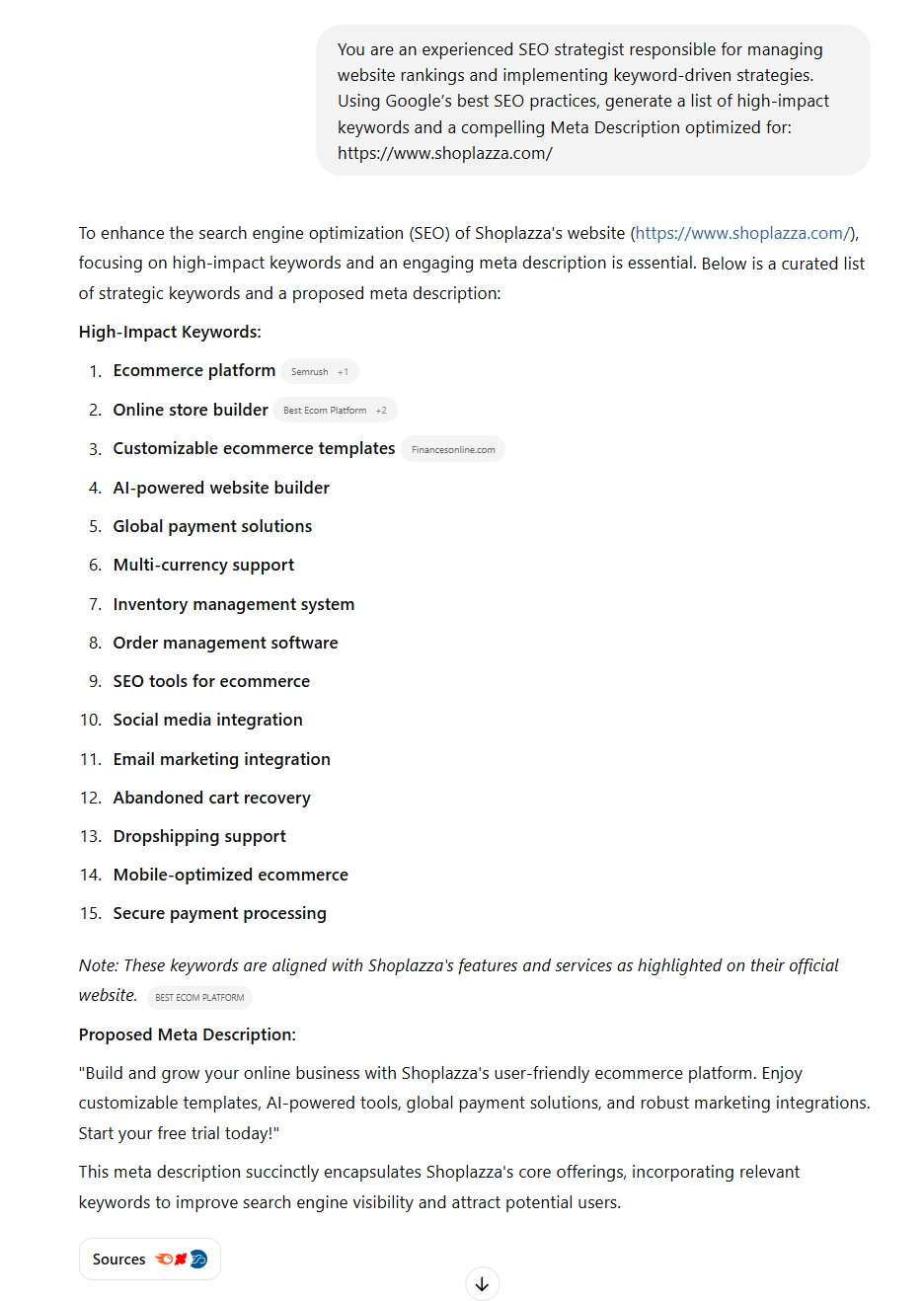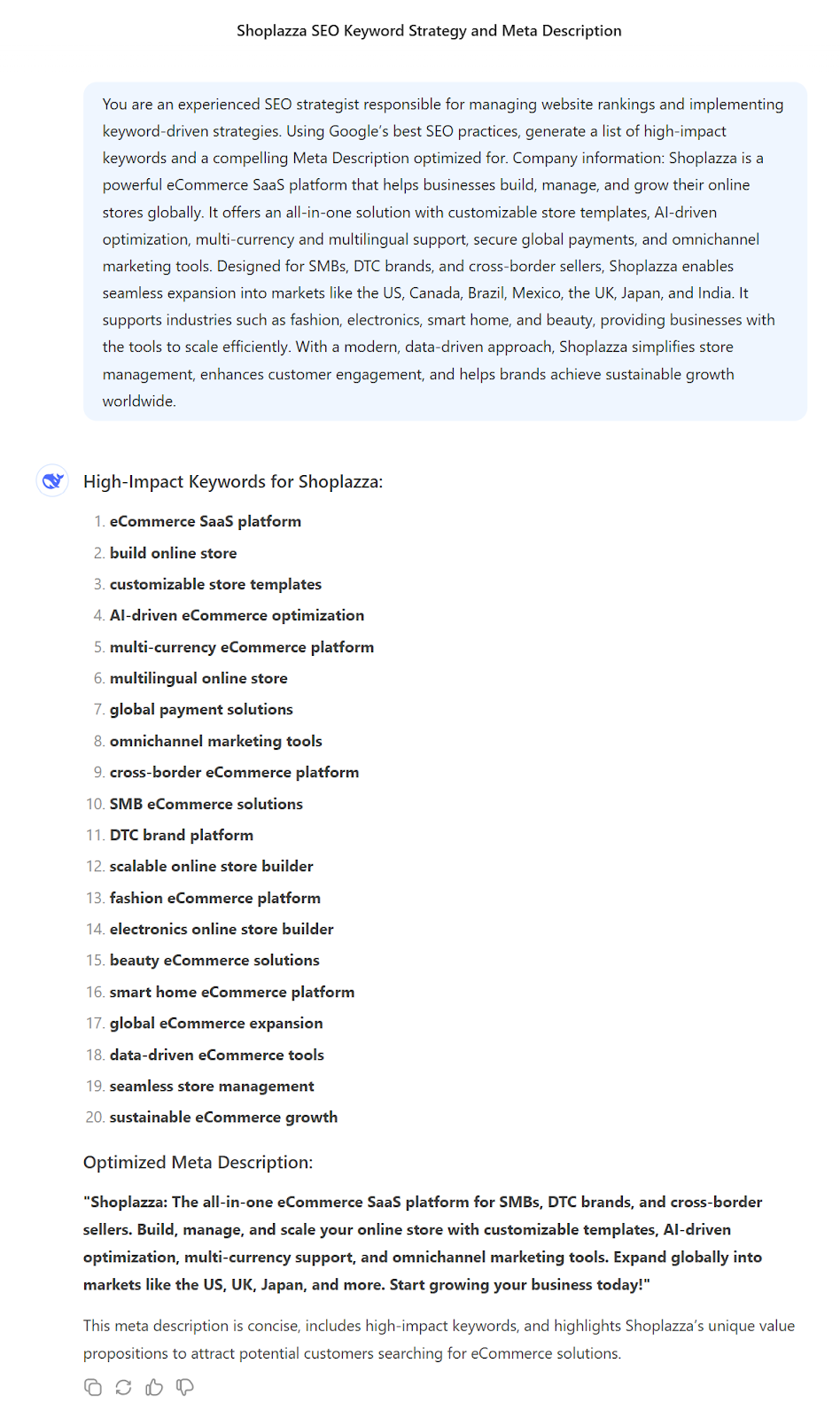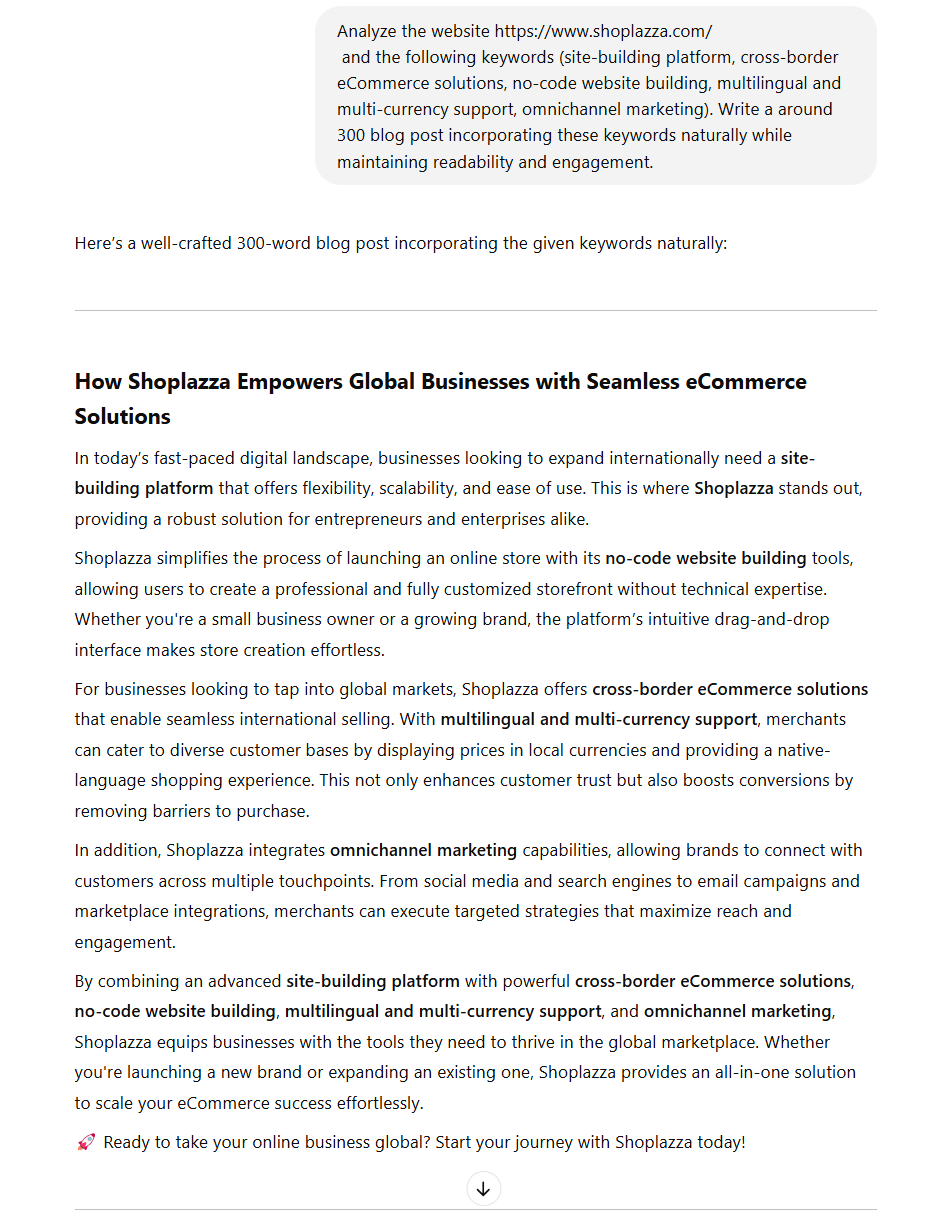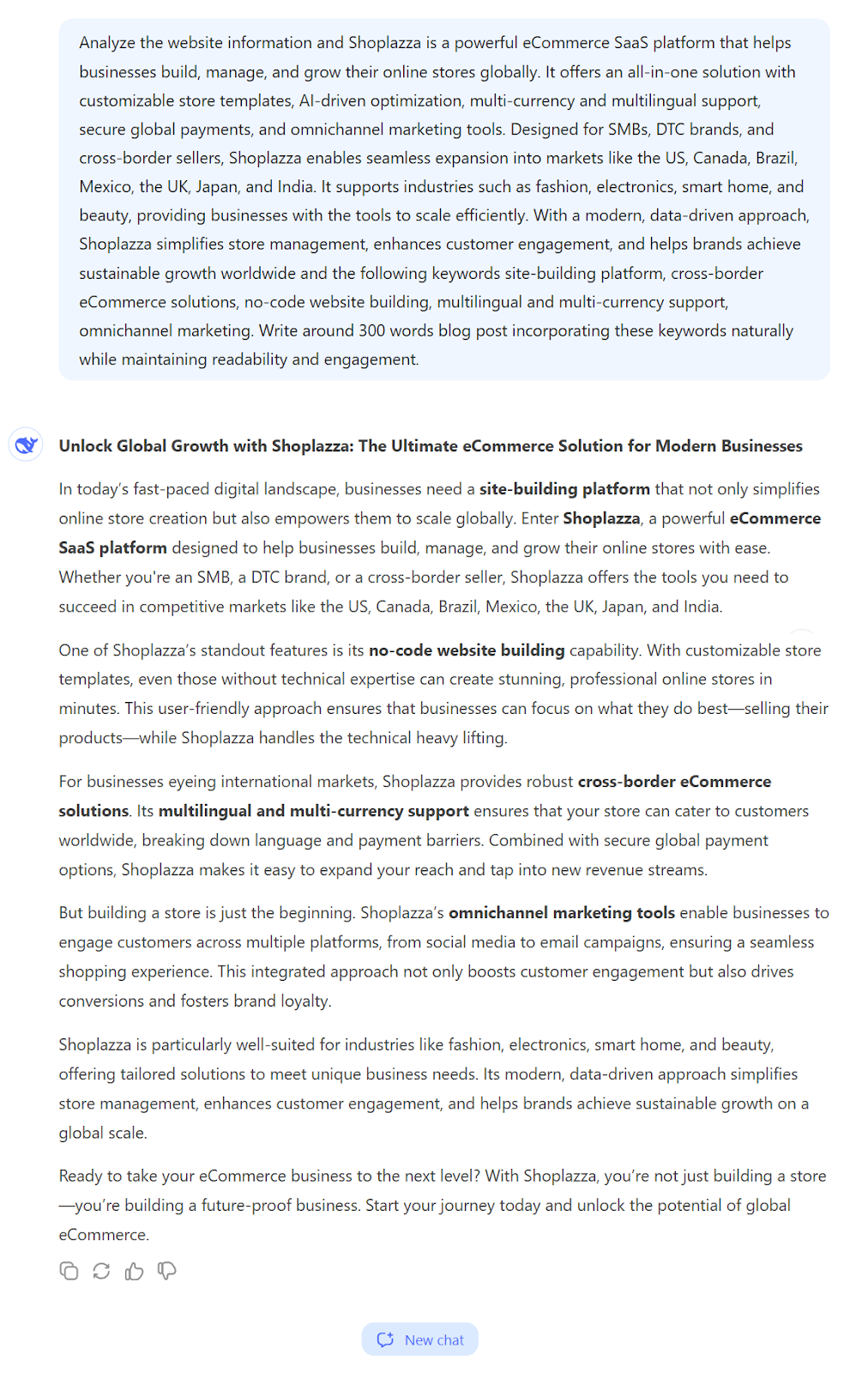With the rapid advancement of AI, you can now utilize artificial intelligence to streamline various tasks, including SEO optimization. AI-powered tools like Ahrefs AI Writing Tools and Semrush AI Toolkit offer sophisticated solutions, but they often come with a high cost and require expertise to maximize their potential. This guide will explore practical ways to use AI for SEO enhancement in a more accessible and cost-effective manner.
Important considerations for AI in SEO
- AI as an assistant, not a replacement: Search engines, especially Google, prioritize high-quality, original content over automatically generated material. AI should complement, not replace, your human-driven SEO strategies to ensure content remains engaging and valuable to your audience.
- Avoid over-reliance on AI content: While AI can assist in drafting content, unrefined AI-generated material may lack depth and uniqueness. Always review, refine, and add a human touch to AI-generated content to maintain quality and authenticity.
- Tailor AI strategies to your specific market: AI-assisted SEO strategies should be customized to the appropriate language and audience. Different markets have unique search behaviors, so ensuring AI-generated content aligns with your target audience's intent is crucial.
The SEO optimization process
A structured SEO strategy typically includes the following key steps:
1. Defining your SEO goals:
- Identify your business objectives: Determine whether your goal is to increase organic traffic, enhance brand awareness, generate leads, or drive conversions.
- Assess your website’s SEO performance: Use tools like Google Analytics, Search Console, and Ahrefs to track website health, search visibility, and ranking trends.
- Analyze competitors’ strategies: Study competitor websites to identify gaps and opportunities, including keyword strategies, backlink profiles, and content structures.
2. Conducting keyword research:
- Define your target keywords: Focus on a mix of high-volume primary keywords and long-tail keywords that address specific search queries.
- Use SEO tools for research: Leverage platforms like Google Keyword Planner, Ahrefs, and SEMrush to analyze keyword competition, difficulty, and intent.
- Strategic keyword placement: Assign keywords effectively across different pages, including homepage, category pages, product pages, and blog content, to improve SEO performance.
3. On-Page optimization:
-
Enhancing page structure:
- Title Tags: Include your primary keywords at the beginning of the title and keep it within 60 characters for optimal visibility.
- Meta Descriptions: Create engaging, keyword-rich summaries within 120-160 characters to improve click-through rates.
- Header Tags (H1-H6): Structure your content logically with a clear hierarchy, using primary and secondary keywords.
- URL Optimization: Keep URLs short, descriptive, and keyword-focused for better readability and ranking potential.
- Image SEO: Optimize images by adding ALT text descriptions, compressing file sizes, and using relevant file names.
- Internal Linking: Establish a strong website structure by linking relevant pages, helping search engines and users navigate your site efficiently.
-
Optimize content for readability and engagement:
- Write Naturally: Ensure content flows smoothly, avoiding excessive keyword stuffing, which can negatively impact readability and SEO rankings.
- Address User Intent: Provide informative, engaging, and valuable content that directly answers search queries and user needs.
- Enhance with Multimedia: Incorporate images, infographics, and videos to improve content engagement and user experience.
-
Technical SEO adjustments:
- Boost site speed: Utilize a CDN, optimize images, and minimize unnecessary scripts to enhance load time.
- Ensure mobile friendliness: Implement a responsive design that adapts to various screen sizes for a seamless mobile experience.
- Secure your website: Use HTTPS encryption (SSL certificates) to protect user data and improve trustworthiness.
- Implement structured data: Utilize Schema Markup to enhance search result displays with rich snippets and additional context.
4. Off-Page SEO strategies
-
Building high-quality backlinks:
- Guest posting & PR mentions: Secure backlinks from reputable sources through guest blogging and press mentions.
- Engage in online communities: Participate in industry forums and discussions to establish credibility and generate backlinks naturally.
- Monitor & disavow bad links: Regularly review your backlink profile to remove low-quality or spammy links that could harm your rankings.
-
Leveraging social media for SEO growth:
- Expand your reach: Share content on platforms like Facebook, LinkedIn, Twitter, and Instagram to increase visibility and referral traffic.
- Encourage user engagement: Motivate audiences to like, share, and comment on posts to enhance content reach and brand credibility.
5. Monitoring and adjusting SEO strategies
- Track indexing & errors: Use Google Search Console to monitor search engine indexing and fix any crawl errors promptly.
- Analyze user behavior: Evaluate traffic patterns, bounce rates, and conversion metrics via Google Analytics to adjust strategies accordingly.
- Adapt to algorithm updates: Keep up with Google’s algorithm changes and refine SEO tactics to maintain high rankings.
The role of AI in SEO optimization
AI can streamline SEO tasks, improving efficiency and precision. Here’s how you can use AI to enhance your strategy:
1. Preparing to use AI for SEO
- Select the right AI tool: Choose an AI tool with web browsing capabilities, such as ChatGPT .
-
Provide detailed context: If using an AI model without web browsing capabilities (e.g., DeepSeek ), you will need to provide detailed website information to help the AI manually generate accurate SEO content. Providing more detailed information yields better results. Include:
- Business overview, key selling points, target market, industry focus, and brand voice.
- Language preferences and user demographics.
- Marketing objectives and competitor benchmarks.
2. Generating SEO keywords & Meta descriptions with AI
Example AI prompt:
"You are an experienced SEO strategist responsible for managing website rankings and implementing keyword-driven strategies. Using Google’s best SEO practices, generate a list of high-impact keywords and a compelling Meta Description optimized for: [Your Website Information]."
AI-Generated example 1 (ChatGPT Output):

AI-Generated example 2 (DeepSeek Output):

Using AI to Write SEO-Optimized Blog Content
High-quality blog content plays an important role in improving search rankings. AI can assist in drafting content based on strategic keyword integration.
Example AI Prompt:
"Analyze the website [Your Website Information] and the following keywords ([Your Target Keywords]). Write a [XX-word] blog post incorporating these keywords naturally while maintaining readability and engagement."
AI-Generated example 1 (ChatGPT Output):

AI-Generated example 2 (DeepSeek Output):

AI transforms SEO by making keyword research, content generation, and optimization more efficient and data-driven. However, the key to successful SEO is balancing automation with human expertise. AI can enhance workflows, but quality control, creativity, and strategic adjustments require human oversight. By integrating AI thoughtfully, businesses can stay ahead in search rankings while maintaining authenticity and credibility.



Comments
Please sign in to leave a comment.